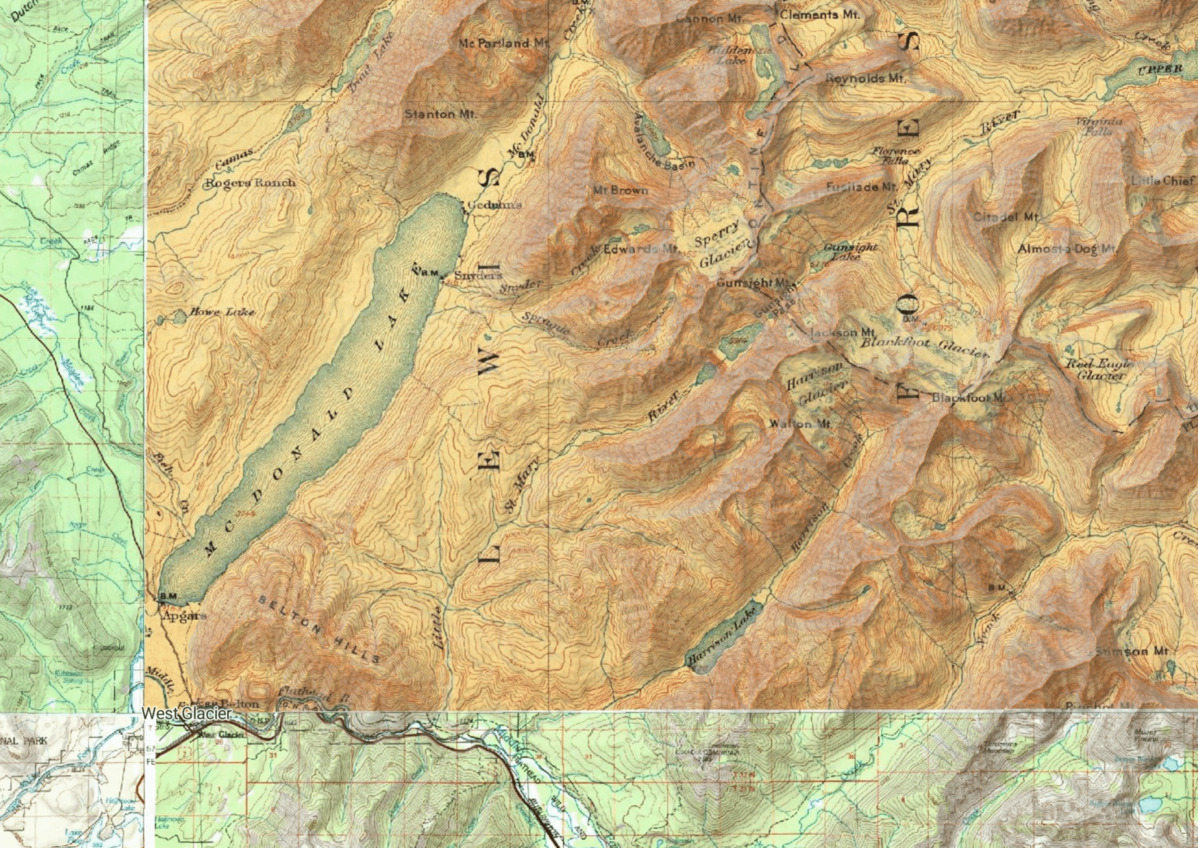A fork of cogeo-mosaic-tiler to serve USGS Historical Topographic map tiles on demand from a mosaic of Cloud-Optimized GeoTIFFs.
I stumbled upon a hidden gem: the entire USGS historical topographic map archive, consisting of 183,112 digitized maps created between 1884 and 2006, is stored in Cloud-Optimized GeoTIFF (COG) format on AWS S3.
The fact that maps are accessible publicly and stored in COG format means that you can easily and cheaply set up a serverless function on AWS Lambda to serve map tiles on the fly.
The COG format is a backwards-compatible, cloud-native storage format for raster files that allow selected portions of the file to be read over the network without needing to download and parse the entire file. This fast random read access allows for dynamic tiling of map tiles on demand, without needing to preprocess and store any map data.
There are three parts to serving your own tiles:
usgs-topo-tiler: a library to extract a single Web Mercator tile from one source historical map. You don't need to touch the library if you're usingusgs-topo-mosaic.usgs-topo-tiler's CLI, which helps to construct MosaicJSON files. These files tellusgs-topo-mosaicwhat source files should be combined to create a single Web Mercator tile.usgs-topo-mosaic: a library to create image tiles on demand with AWS Lambda, using a MosaicJSON file created fromusgs-topo-tiler.
You can deploy your own serverless map tile server with a few lines of code.
git clone https://github.com/kylebarron/usgs-topo-mosaic
cd usgs-topo-mosaicPackage all dependencies into a file package.zip that's ready to be uploaded
and used on AWS Lambda. Requires GNU Make and Docker.
make packageThis project uses Serverless to easily deploy on AWS.
You should pass the name of an S3 bucket you have access to (preferably in the
same region) with the --bucket parameter.
# Install and Configure serverless (https://serverless.com/framework/docs/providers/aws/guide/credentials/)
npm install serverless -g
sls deploy --bucket your-bucketThe function will be deployed in the us-west-2 region, because that's where
the USGS's S3 bucket is located. Locating usgs-topo-mosaic makes requests
faster, as source data fetched from the origin bucket doesn't have to exit the
region, and also makes USGS's egress bandwidth costs lower.
At the end of the sls deploy step, it should have printed the URL of your
endpoint to the console. You can now make requests to that URL.
However to actually create image tiles, you still need a MosaicJSON file, which
tells the tiler which sources to combine for each web tile. Refer to
usgs-topo-tiler's documentation for how to create this
file.
Upload one or more MosaicJSON files to your bucket. Then pass that url with the
url query string. For example, your image endpoint url might look something
like:
{ENDPOINT_URL}/{z}/{x}/{y}@2x.jpg?url=s3://{bucket}/mosaics/{mosaic_name}.json.gz
Note that all parameters must be correctly URL-encoded, so for example s3://
would need to be escaped.
A separate documentation file has full information about the
endpoints available. Not all endpoints have been ported yet to work with USGS
historical maps. I mostly use the /tilejson.json and /z/x/y.jpg image
endpoints. The /create endpoint is not currently implemented but might be in
the future.
Fork of cogeo-mosaic-tiler.
